A bright particle found inside a scoop hole created by the Curiosity rover. Credit: NASA/JPL-Caltech.
Last weekend, the Mars Curiosity rover scooped out a few “bites” in the small, sandy dune known as Rocknest and inside the second scoop hole was a small, shiny particle, as we reported earlier. This speck – and others like it in the pit — is different than the previous object that looked like plastic and may have come from the rover itself. After some analysis, the MSL science team thinks the shiny particle is just part of the soil on Mars.
“As the science team thought about it more and more, the bright object is about the same size as the granules that it’s in and it is not uniformly bright,” said John Grotziner, MSL project scientist. “We went back and forth, and the majority of the science team thinks this is indigenous to Mars.”
And so, Grotziner said, these shiny objects likely represent a science opportunity rather than an engineering hazard.
One hypothesis that the specks are natural geologic material that might have a broken-off, flat surface called a cleavage that could be reflecting sunlight, making it appear bright.
The size of the bright fleck is about 1 mm, so it is “pretty representative of other objects there,” Grotzinger said, which range from half a millimeter to 2 millimeters.
Grotzinger said they will use the ChemCam instrument to take a closer look at the shiny specks. “We are going to shoot it with ChemCam, a remote sensing tool that has spectacular spatial resolution,” he said, “and aim it right on that fleck. Then we’ll aim it on another darker grain and try to decide if it is a different class of mineral.”
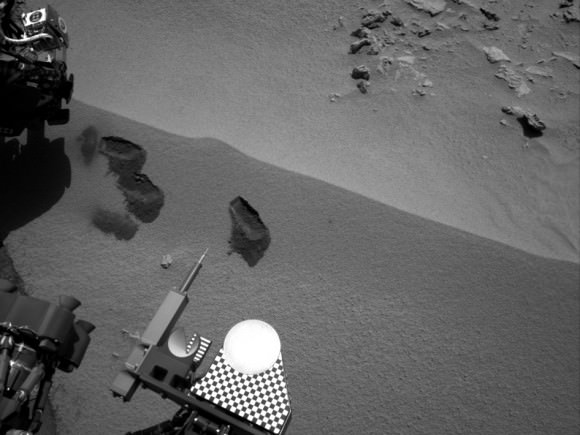
Three ‘bite marks’ left in the Martian ground by the scoop on the robotic arm the Curiosity rover are visible in this image taken by the rover’s right Navigation Camera during the mission’s 69th Martian day, or sol (Oct. 15, 2012). Credit: NASA/JPL-Caltech
One way the team tested if the shiny flecks were something that may have come from the rover was that after pictures were taken of the area, they vibrated the rover for about an hour and then took more images. Nothing had changed in the surrounding area, with no additional flecks visible on the ground.
After the shiny fleck was initially seen, the team dumped out the scoop they had taken over concerns it was another foreign object, perhaps from the rover or from the Entry Descent and Landing of the rover, as was determined for previous, plastic-looking object found on Mars. But now they are planning to look closer at both the dumped-out scoop of soil and the pit to analyze the shiny flecks.
The big news that Grotzinger reported today during a press briefing was that they just received confirmation that the rover successfully placed a small sample of soil inside Chemistry and Mineralogy (CheMin) instrument and soon will be analyzing the sample to determine what minerals it contains.
“Our mobile laboratory eats dirt,” Grotzinger said, “whether we scoop it up or drill a hole in rock, that’s what keeps us going, that’s what we live on.”
They also placed a portion of the third scoop of soil taken onto the observation tray and took an image of it with the Mastcam.
“We see two components in the soil,” Grotzinger said. “One is a thin layer of lighter colored, finer grained material. Then there are some darker grains, which represent the courser fraction that is available.”
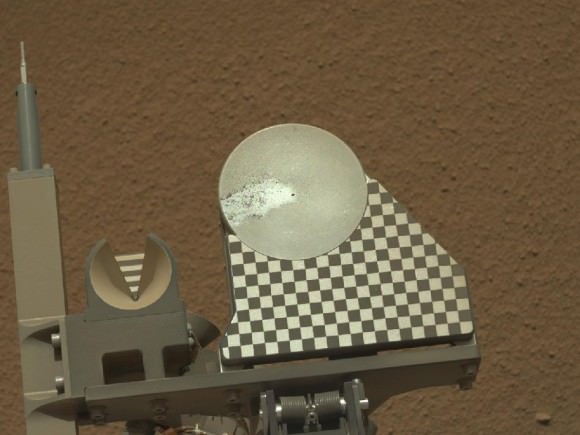
A closeup look at the sample of Martian regolith that was dumped on an observation tray on the rover. The tray is 7.8 centimeters (3 inches) in diameter. Credit: NASA/JPL-Caltech
Grotzinger said he hopes to be able to report within the week of the results of the first analysis of Martian soil from CheMin. Also, the SAM laboratory (Sample Analysis at Mars) is scheduled to take its first sample next week. SAM is a suite of instruments that investigate the past and present ability of Mars to support life.
They were slowed in slightly in getting the first sample inside ChemMin not only by the discovery of the bright flecks, but also by a safing event that took place on the Mars Reconnaissance Orbiter, which relays the data from the rover to Earth. The orbiter is now back to full functionality.
NASA’s latest report about the rover can be read here.

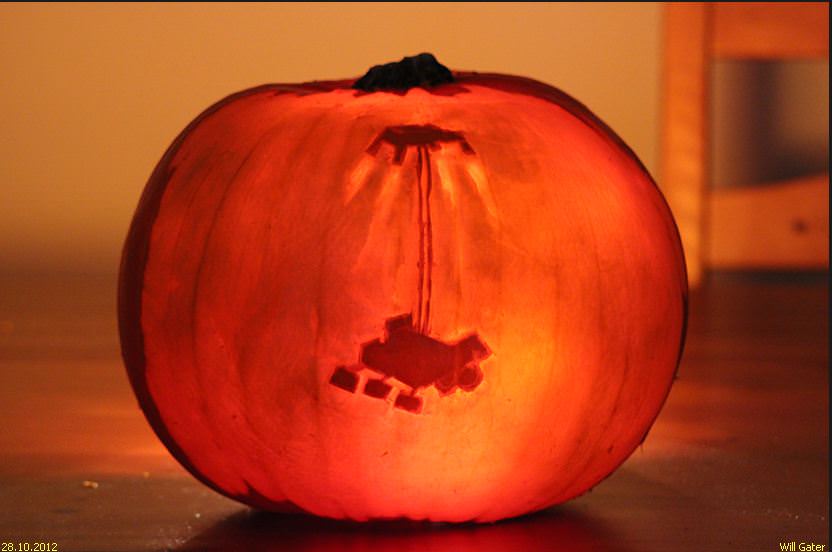
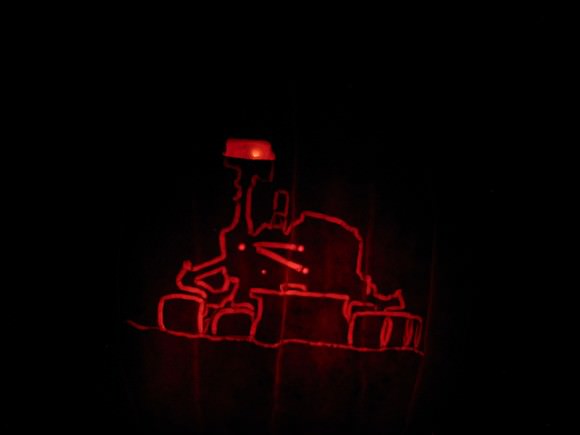


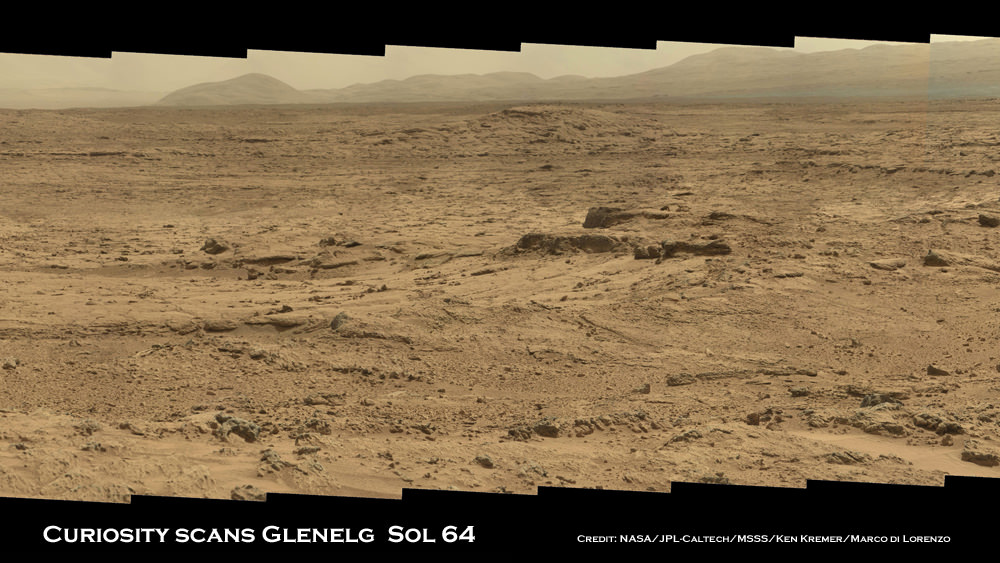


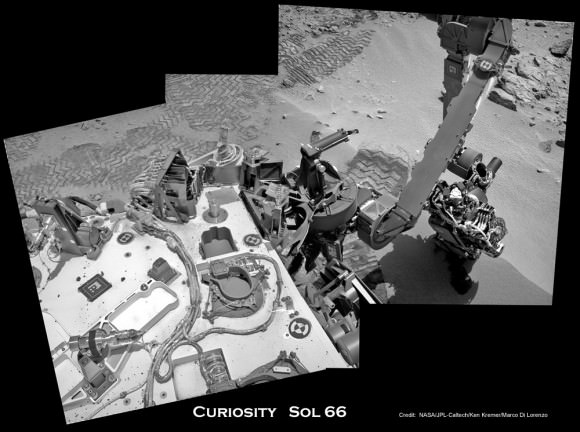
![698428main_Grotzinger-1pia16231-946[1]](https://www.universetoday.com/wp-content/uploads/2012/10/698428main_Grotzinger-1pia16231-9461-580x435.jpg)
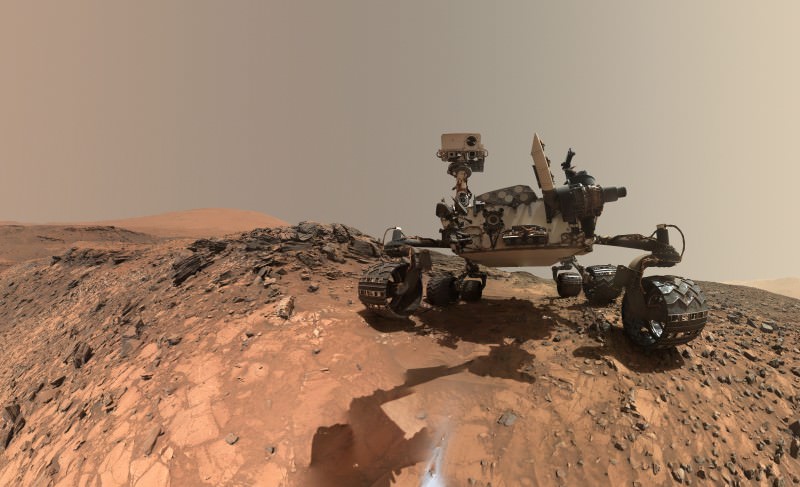
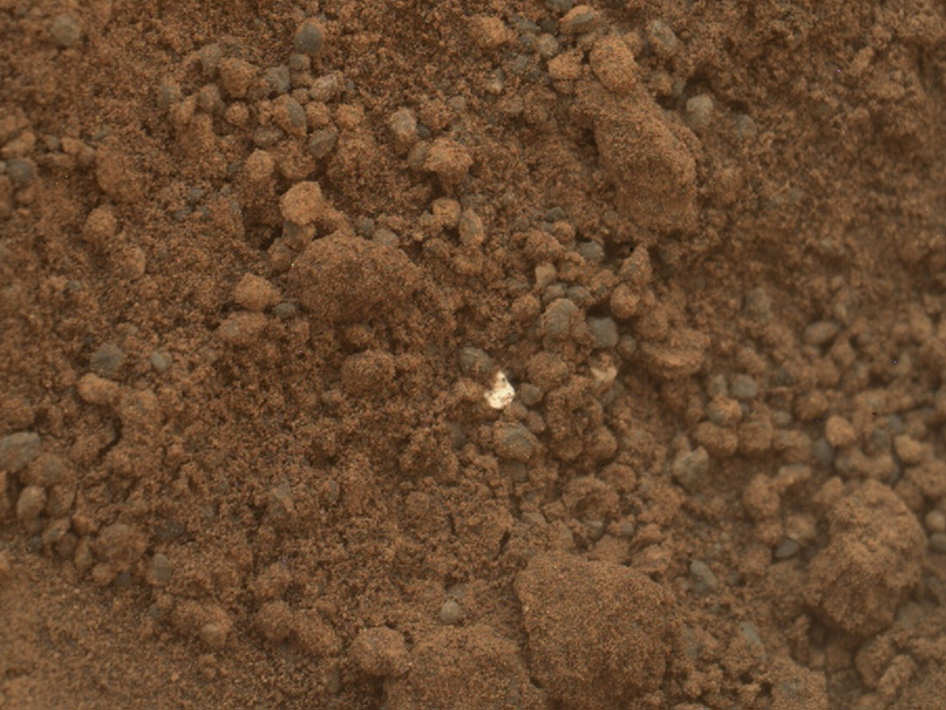


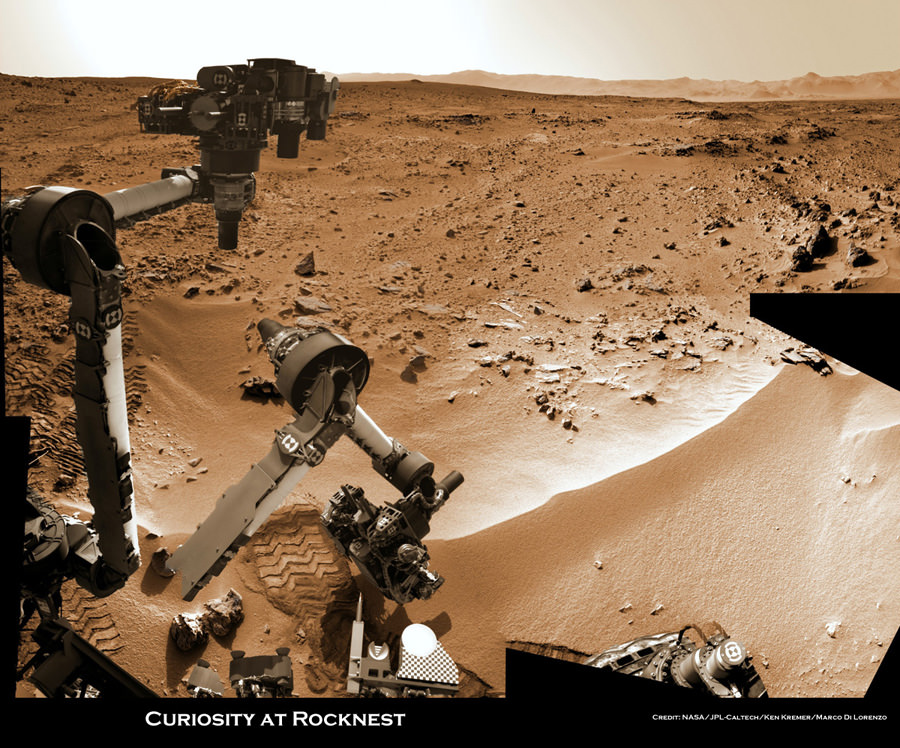
![697173main_pia16229-43_946-710[1]](https://www.universetoday.com/wp-content/uploads/2012/10/697173main_pia16229-43_946-7101-580x435.jpg)
![697185main_pia16230-43_946-710[1]](https://www.universetoday.com/wp-content/uploads/2012/10/697185main_pia16230-43_946-7101-580x435.jpg)

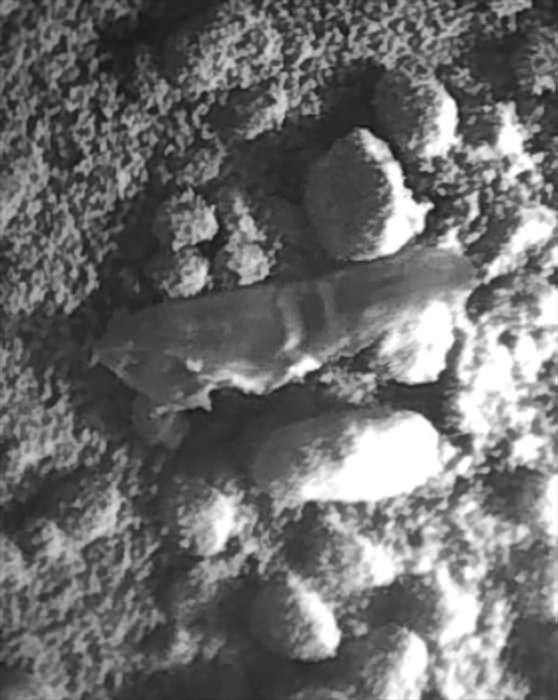
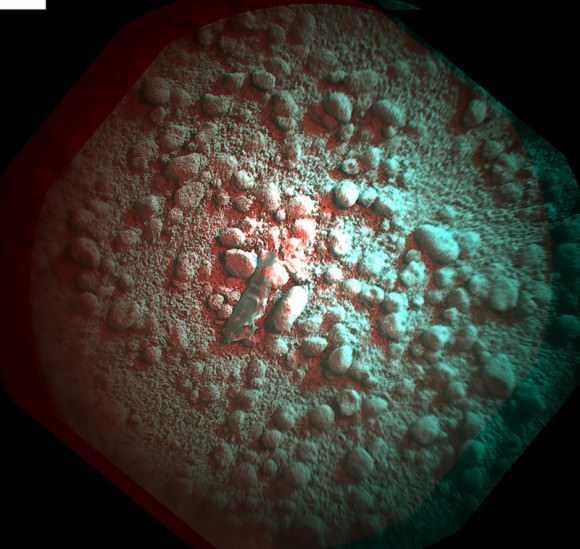
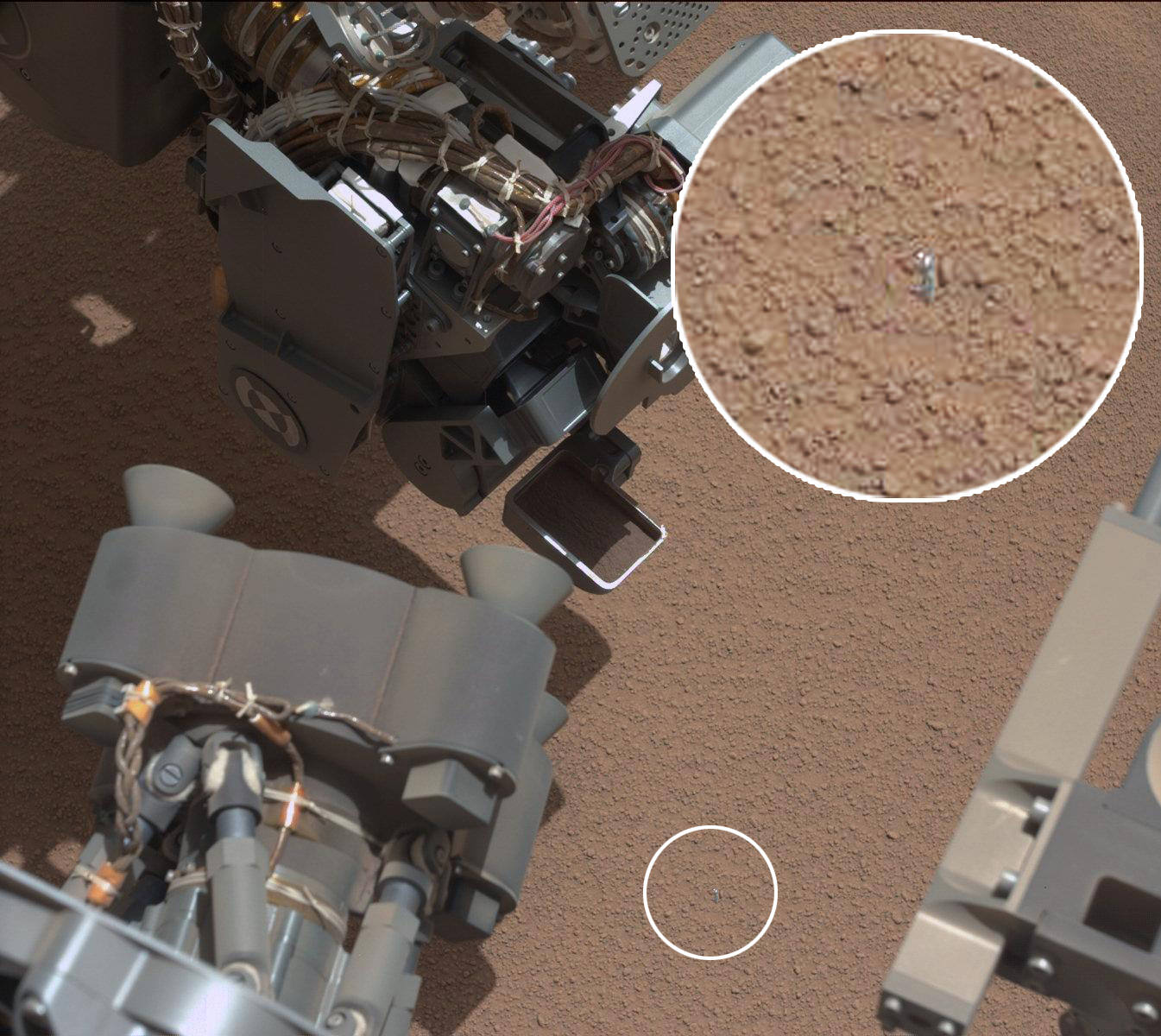
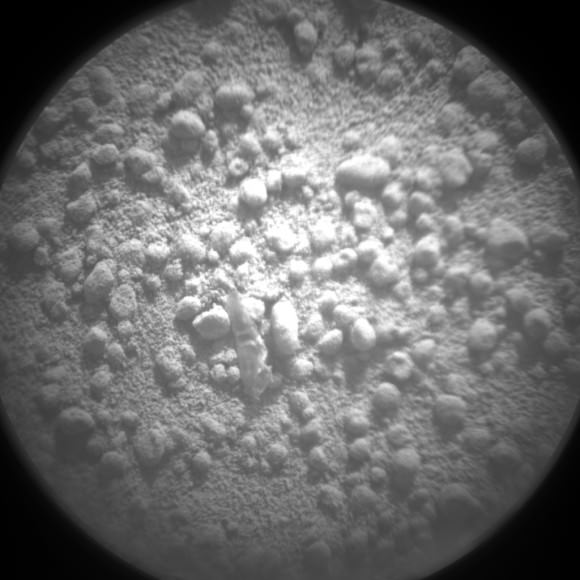

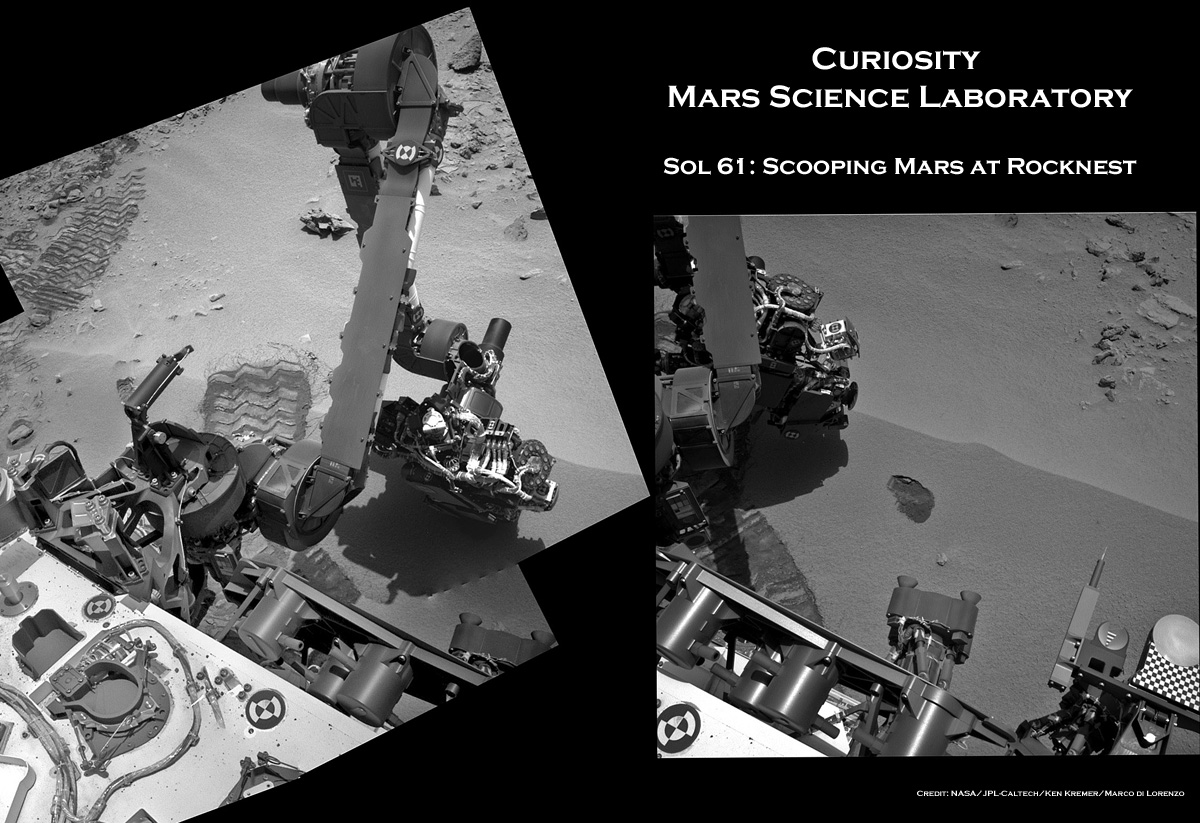
![NLA_402906079EDR_F0050104NCAM00326M_[1]](https://www.universetoday.com/wp-content/uploads/2012/10/NLA_402906079EDR_F0050104NCAM00326M_1-580x580.jpg)
![0061MR0319001000E1_DXXX[1]](https://www.universetoday.com/wp-content/uploads/2012/10/0061MR0319001000E1_DXXX11-580x435.jpg)